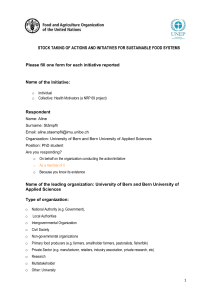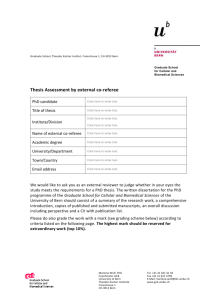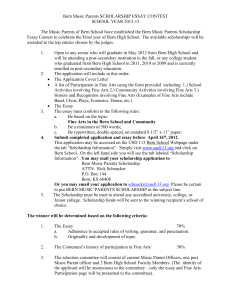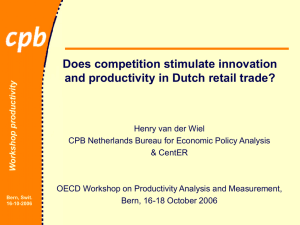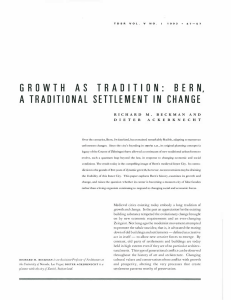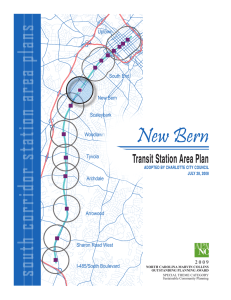MATH 1180 MATHEMATICS FOR LIFE SCIENTISTS Computer Assignment V Due February 17, 2004
advertisement
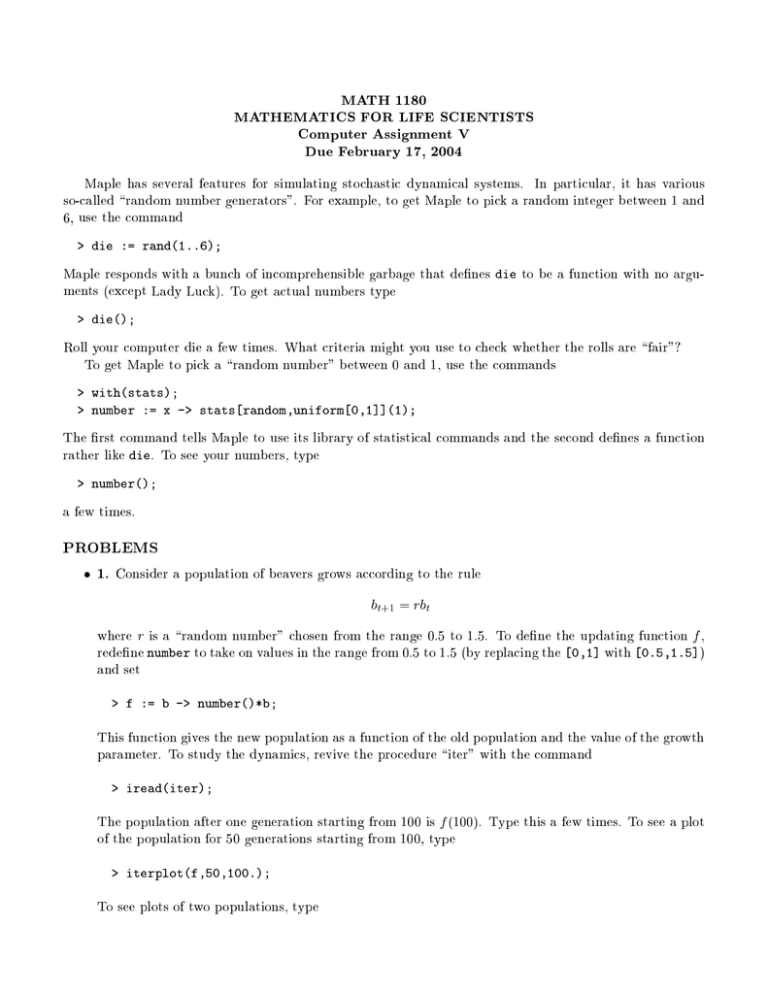
MATH 1180 MATHEMATICS FOR LIFE SCIENTISTS Computer Assignment V Due February 17, 2004 Maple has several features for simulating stochastic dynamical systems. In particular, it has various so-called \random number generators". For example, to get Maple to pick a random integer between 1 and 6, use the command > die := rand(1..6); Maple responds with a bunch of incomprehensible garbage that denes die to be a function with no arguments (except Lady Luck). To get actual numbers type > die(); Roll your computer die a few times. What criteria might you use to check whether the rolls are \fair"? To get Maple to pick a \random number" between 0 and 1, use the commands > with(stats); > number := x -> stats[random,uniform[0,1]](1); The rst command tells Maple to use its library of statistical commands and the second denes a function rather like die. To see your numbers, type > number(); a few times. PR OBLEMS 1. Consider a population of beavers grows according to the rule +1 = rbt bt where is a \random number" chosen from the range 0.5 to 1.5. To dene the updating function , redene number to take on values in the range from 0.5 to 1.5 (by replacing the [0,1] with [0.5,1.5]) and set f r > f := b -> number()*b; This function gives the new population as a function of the old population and the value of the growth parameter. To study the dynamics, revive the procedure \iter" with the command > iread(iter); The population after one generation starting from 100 is (100). Type this a few times. To see a plot of the population for 50 generations starting from 100, type f > iterplot(f,50,100.); To see plots of two populations, type > iterplot2(f,f,50,100.,100.); Try this a few times until you get a plot that looks interesting. Print this graph and label the nal size of each population. Why are the two solutions dierent? If someone showed you these data without telling you they were generated on a computer, how would you describe and interpret the results? 2. Consider a population growing due to immigration ( + 1 with probability 0.5 +1 = with probability 0.5. A special function bern (named after one of the famous family of French mathematicians, the Bernoulli's) has been dened to simulate this situation, and can be read in with Nt Nt Nt > iread(draw); is a function of that gives a result 1 with probability and a result 0 with probability 1 ? when you type bern(p);. Try \bern(0.5)", \bern(0.1)" and \bern(0.9)" a few times to see how they work. Dene an updating function bern p p p g > g := N -> N + bern(0.5); and use iterplot2 to generate two 50 generation solutions starting from populations of 0. Print the graph and label the nal size of each population. If someone showed you this as data, how would you describe and interpret the results? Are your solutions more similar than those in 1. Do the two populations ever cross? Does this have anything to do with basketball? 3. Consider a population of lizards on an island described by = 1 if the island is occupied and = 0 if the island is unoccupied. Suppose this population follows the rule ( with probability 0.3 if = 0 +1 = 1 with probability 0.9 if = 1 ( with probability 0.7 if = 0 +1 = 0 with probability 0.1 if = 1. There is a tricky way to program the updating function in Maple as M M Mt Mt Mt Mt Mt Mt > h := M -> M*bern(0.9)+(1-M)*bern(0.3); If = 1, = bern(0 9) and remains at 1 with probability 0.9, while if = 0, = bern(0 3) and switches to 1 with probability 0.3. Use iterplot to generate a solution of 50 generations of this population starting from the occupied state. When does the population rst go extinct? For how long? What is the nal state of the population? Is the island occupied more often than unoccupied? Does this make sense? 4. Consider again the population of lizards in 3. The probability that the island is occupied follows the updating function M h : M M h : M p > H := p -> 0.9*p+0.3*(1-p); This matches the equation for ( ) on \average". Use iterplot2 to plot a solution of the probability equation and a simulation of an island starting from = = 1 (use enough steps to see what is going on). Solve for the equilibrium probability. Why doesn't the simulation seem to approach an equilibrium? What do the two graphs have to do with each other? h M M p
